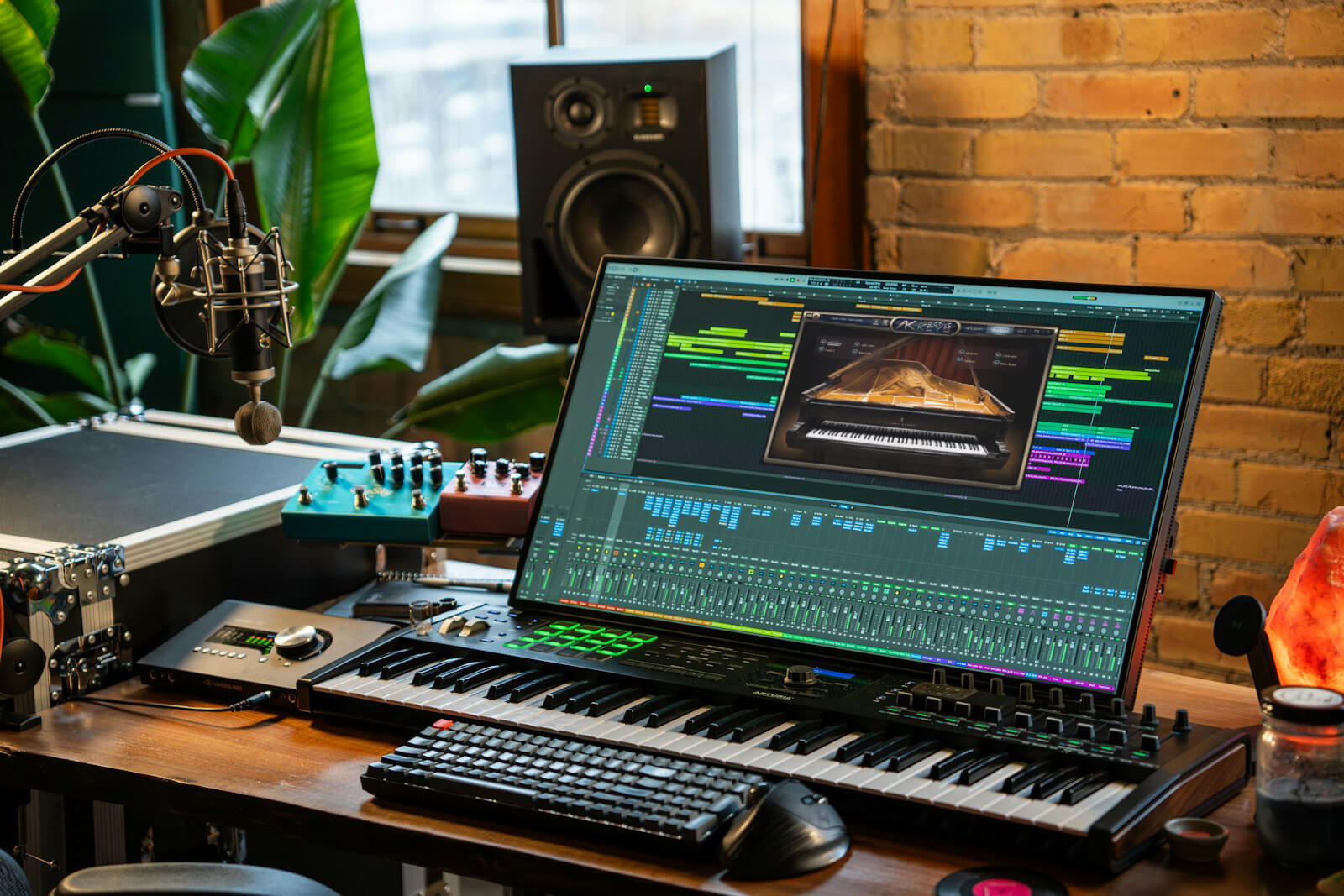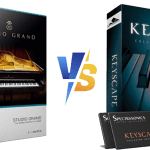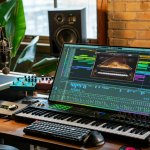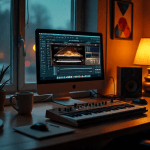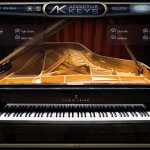Addictive Keys in Music Production: Pop, EDM & Hip-Hop Workflows
If you’ve spent any time making beats or tracks, you know the piano isn’t just for classical recitals. It’s everywhere—in the opening chords of a pop anthem, the haunting loop under a trap verse, or the shimmering breakdown of an EDM drop. And when you need a piano that can keep up with modern production demands, Addictive Keys (AK) by XLN Audio is one of the few plugins that actually delivers. See My Addictive Keys Studio Grand Review for more details
It’s built around a Steinway Model D, recorded at Swedish Radio with vintage tube and ribbon mics, but don’t let that fool you into thinking it’s just another “realistic” piano. AK isn’t trying to mimic a concert hall—it’s built for the DAW, with tools that let you shape, warp, and blend the sound to fit right into today’s tracks.
You’ll find Addictive Keys in music production across many genres. Producer Kaelin Ellis, known for his soulful, sample-inspired beats, has been open about using Addictive Keys—specifically the Studio Grand patch—as a foundational element in his piano tones. And he’s not alone. From film composers scoring emotional scenes to pop producers crafting radio-ready ballads, AK has become a go-to for anyone who needs a piano that sounds both authentic and ready to be processed.
Here’s how to use it in pop, EDM, and hip-hop—not just as a background instrument, but as a core part of your sound.
Why Addictive Keys in Music Production Stands Out
Most piano VSTs give you a nice sound and leave the rest to you. AK hands you the whole toolbox:
- Six mic positions—close, ambient, mono, stereo, and more—so you can dial in anything from an intimate upright vibe to a wide, cinematic wash. You can even blend three at once.
- Built-in effects that matter: EQ, compression, distortion, chorus, phaser, tremolo, plus vinyl crackle, tape hiss, and stompbox noise. No need to chain five plugins just to get a lo-fi texture.
- Smart sound-shaping controls:
- Sample Shift tweaks tone without touching pitch—great for darkening a bright note or adding bite.
- Velocity-to-Sample lets you exaggerate or smooth out dynamics.
- Pedal noise and sustain body add realism—or stylized grit if you crank them.
- X-Modulation ties parameters to MIDI CCs, so your piano can evolve over time without automation lanes.
- Fast workflow: ExploreMaps let you save and recall full snapshots (not just presets), and the memo recorder grabs ideas before they vanish.
This isn’t just a piano—it’s a production module that happens to play notes.
Pop: Clarity, Emotion, and Hooks
Pop lives or dies in the first 10 seconds. The piano often carries that opening moment, so it needs to be immediate, clean, and emotionally direct.
You’ll lean on familiar progressions—think I–V–vi–IV—but what matters is how it feels. AK’s Steinway has enough warmth to avoid sounding sterile, but enough definition to cut through a dense arrangement.
How to use it:
- Start with the Close Tube mic for presence, maybe blend in a touch of Ambience Tube for space—just enough to feel alive, not washed out.
- Light compression keeps the dynamics even without squashing the life out of it.
- A small EQ bump around 250–400 Hz adds body without stepping on the vocal’s low-mids.
Most pop producers sketch chord progressions in AK first, then build everything else on top. That piano part often stays in the final mix—sometimes just a single layer under the vocal, sometimes doubled with synths. Either way, it’s the emotional anchor.
EDM: Texture, Tension, and Movement
EDM might run on synths and drums, but piano is the secret weapon in breakdowns, intros, and emotional drops. Think of the melancholic chords in Avicii or the arpeggiated hooks in progressive house—those moments stick because they feel human.
Where AK shines:
- Use Close Ribbon for tight attack, then layer Ambience Tube for depth during breakdowns.
- Automate a low-pass filter (via X-Mod) to create tension as a drop approaches.
- Throw on chorus or phaser to help the piano sit with analog-style synths—it stops it from sounding like a solo instrument and blends it into the texture.
Mixing tip: Cut around 600–800 Hz to avoid clashing with supersaws or pads. Boost the highs (8–12 kHz) slightly in breakdowns for that “shimmer” that cuts through.
In practice, you might start a track with a bright, rhythmic piano arpeggio in AK, then filter it out as synths take over—only to bring it back, compressed and saturated, at the climax.
Hip-Hop: Mood, Grit, and Soul
Hip-hop piano isn’t about virtuosity—it’s about atmosphere. A two-chord loop can define an entire beat, whether it’s the haunting minor vamp in HUMBLE. or the jazzy ii–V–I under a lo-fi instrumental.
AK nails this because it can go from clean and soulful to distorted and aggressive in seconds.
Try this:
- Add vinyl noise or tape saturation for that worn-in, sample-like texture.
- Run the piano through distortion and gated reverb for trap—think Metro Boomin-style menace.
- Duplicate the track: leave one clean, saturate the other, maybe pitch one slightly down for thickness.
Mixing notes:
- Hip-hop mixes are often sparse, so the piano needs to cut through. A slight midrange boost (1–2 kHz) helps.
- Use plate reverb for intimacy (great for introspective tracks) or hall reverb for cinematic drama.
- Heavy compression locks it in with the drums—especially if you’re going for that punchy, in-your-face trap sound.
A Tyler, The Creator-style beat? Try a jazzy progression with tape hiss, analog delay, and just enough saturation to feel warm but not clean. For something darker, like a Future or Travis Scott vibe, distort a minor loop and slap on tight gated reverb.
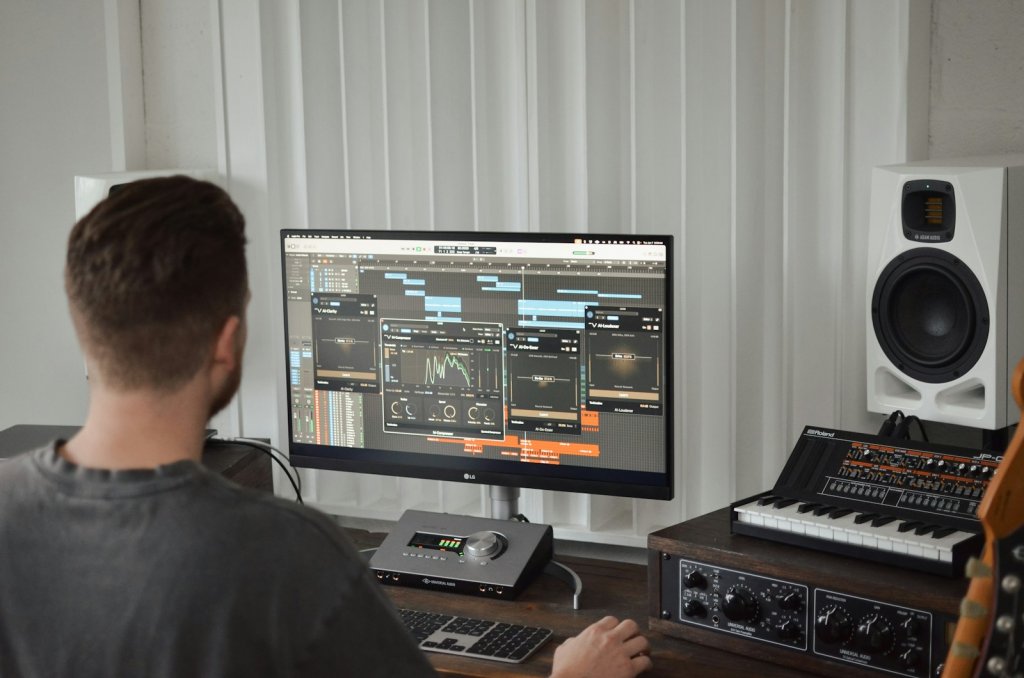
Making It Sit in the Mix—No Matter the Genre
The biggest mistake? Treating the piano as an afterthought. In modern production, every element needs to earn its place.
AK helps because it’s designed to be mixed from the start:
- Mic blending prevents that “dry sample” sound—no more slapping on reverb as an afterthought.
- EQ before you even hit your DAW’s channel strip—carve out space for vocals, snares, or bass right inside the plugin.
- Creative effects aren’t just gimmicks—distortion can glue the piano to an 808, chorus can widen a thin part, and reverb sends (via the built-in options) add depth without muddying the low end.
- Automate—swell the reverb in choruses, sweep a filter during a build, or modulate delay time in a trap loop for subtle movement.
The goal isn’t just to add piano—it’s to make it feel like it was born in the track.
Real Workflows That Actually Happen
Pop speedrun:
Drop in a bright progression → blend Close + Ambient mics → light compression → add kick and bass → done. You’ve got a radio-ready foundation in under five minutes.
EDM session:
Start with a filtered arpeggio → automate X-Mod for evolving texture → layer with a pad → sidechain both to the kick. The piano isn’t competing—it’s part of the synth bed.
Hip-hop beat:
Loop a minor 7th chord → duplicate track → saturate one, add vinyl noise to the other → pan slightly → drop in 808 and snare. Instant mood.
A Few Practical Notes
AK isn’t light on RAM—loading all six mics can push past 1.3 GB. Most pros just load two or three and blend them. You don’t need all six to get a great sound.
Compared to other pianos:
- Ivory sounds stunning but feels like a museum piece—great for solo work, less so for beat-making.
- Art Vista has gorgeous highs but fewer production tools.
- AK trades “perfect realism” for flexibility—and in pop, EDM, and hip-hop, that’s exactly what you need.
Bottom Line
Pop wants emotion that grabs you fast.
EDM needs harmony that moves and evolves.
Hip-hop craves mood you can feel in your chest.
Whether you’re sketching a pop ballad, designing an EDM breakdown, or building a moody hip-hop loop, Addictive Keys in music production proves it’s more than a piano plugin—it’s a creative engine.
It’s not trying to be a concert grand in your living room. It’s a production instrument, ready to be processed, layered, and twisted until it fits your track like it was made for it.
And in a world where every second counts in the studio, that’s worth more than realism.
Create Your Own Chord Loops
If you’re inspired by the chord progressions we’ve covered, check out my Chord Loop Creation App. It’s a simple, browser-based tool that lets you experiment with chord cycles, progressions, and patterns — perfect for producers who want to spark new ideas quickly.
Where to Get Addictive Keys: Studio Grand
If you’re ready to take your productions further, I highly recommend the Addictive Keys Studio Grand — one of the best piano VSTs for Hip-Hop, EDM, and Pop production. It’s the exact version I’ve highlighted throughout this guide, and it delivers the perfect balance of realism and creative flexibility.
Here’s what you’ll get with Studio Grand:
- 🎹 A beautifully sampled Steinway Model D Concert Grand, known for its rich, expressive tone.
- 🎧 Six professional microphone perspectives you can blend for intimate pop ballads, cinematic EDM breakdowns, or moody hip-hop loops.
- 🎛️ Built-in effects like EQ, compression, distortion, chorus, and reverb — no need to rely on third-party plugins.
- ⚡ A streamlined workflow with ExploreMaps, presets, and memo-saving, making it a go-to EDM piano plugin for quick inspiration.
Whether you’re looking for a virtual piano VST for pop songwriting or a piano plugin that cuts through hip-hop and EDM mixes, Studio Grand has you covered.

